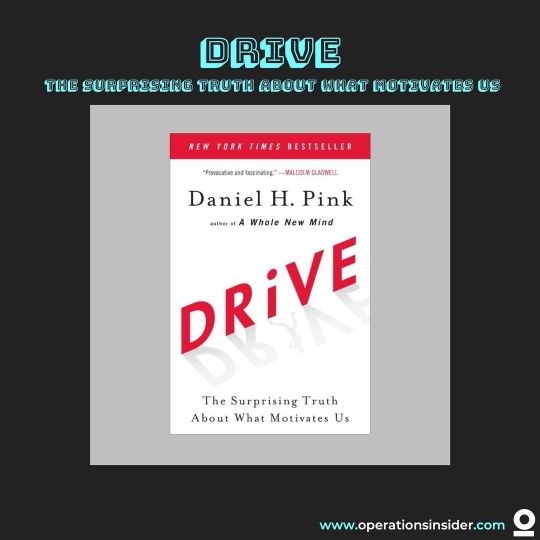#intrinsicmotivation
Text
Autism Special Interests and ADHD Hyperfocus: An Exploration of Intrinsic and Extrinsic Motivation
In the world of neuroscience and psychology, a considerable distinction exists between intrinsic and extrinsic motivation. With intrinsic motivation, behavior is conducted for its own sake, while extrinsic motivation drives behavior based on external rewards or punishments.
In the context of Autism and ADHD, two neurodivergent conditions, this distinction becomes particularly relevant when examining the phenomena of "special interests" in Autism and "hyperfocus" in ADHD.
Special interests in Autism represent intense, often highly specific interests common among autistic individuals. These interests typically exhibit intrinsic motivation - the autistic individuals engage in them purely out of interest and joy in the subject matter, not because of an external reward or acknowledgment. This can lead to autistic individuals cultivating impressive knowledge and skills within their special interests, pursuing these with significant enthusiasm and passion.
Conversely, ADHD hyperfocus represents a state of intense concentration, wherein an individual becomes so engrossed in an activity they lose track of time and their surroundings. This state can be difficult to control and can be both productive and unproductive, depending on the focus of the activity. Unlike Autism's special interests, ADHD hyperfocus appears to be more extrinsically motivated. This means it's more frequently triggered by external factors like rewards or the need to complete a task than by an inherent interest in the activity itself.
While this distinction isn't absolute and there are overlaps and exceptions (both states can manifest intrinsic and extrinsic motivations depending on the individual and specific situation), it provides a fascinating lens to view these neurodivergent conditions. Continued research in these areas is vital for a more comprehensive understanding of different forms of motivation in Autism and ADHD, and their impacts on learning and behavior.
3 notes
·
View notes
Text
Unlock Your Full Potential: Discover What Truly Motivates You!
Understanding the sources of motivation is a crucial aspect of achieving professional success and personal fulfillment. Whether you’re an entrepreneur, a creative professional, or someone navigating the corporate world, identifying what truly drives you can be a game-changer. This article delves deep into the psychology of motivation, shedding light on the different factors that influence our…
View On WordPress
#AchieveSuccess#AchieveYourBest#dailyprompt#dailyprompt-2036#DreamsToReality#DriveToSucceed#ElevateMotivation#EmpowermentJourney#ExtrinsicRewards#GoalAchievement#GoalCrusher#GoalGetter#GoalSetting#GoalsInFocus#InnerMotivation#InspiredActions#IntrinsicMotivation#MotivatedMindset#MotivationBoost#MotivationInspiration#MotivationMastery#MotivationMatters#MotivationPower#MotivationTheory#PassionUnleashed#PersistentPursuit#PurposeDriven#StayMotivated#SuccessMindset#UnleashYourDrive
0 notes
Text
External motivation comes from external rewards or pressures, while internal motivation arises from personal interests and values. External motivation relies on external validation, while internal motivation stems from intrinsic satisfaction. No need for external validation when you're fueled from within!

#motivation#values#satisfaction#externalvalidation#IntrinsicMotivation#PassionPowersMe#InnerStrength#businesscoach#coach#transformation
0 notes
Text
The Influence of Intrinsic Motivation

Motivation is the force that drives us forward in life as we work toward our objectives. Intrinsic motivation stands out among the several forms of motivation as a powerful internal force that propels us to act out of sheer happiness and personal fulfillment. However, what precisely is intrinsic motivation, and how does it affect our actions and output? Enter the realm of intrinsic motivation, which is intriguing.
A Deep Dive into Intrinsic Motivation

A Deep Dive Into Intrinsic Motivation
Learning What Intrinsic Motivation Means
Intrinsic motivation is the desire to act for its own sake instead of depending on incentives or results from other sources. It's about making the trip as enjoyable as the goal by finding pleasure and satisfaction. Each person's drive is distinctive and intensely personal. The flame sparks our curiosity when we engage in an activity we like or take on a difficult assignment.
Intrinsic Motivation: The Psychology
Intrinsic motivation is intimately related to our physiological and psychological requirements from a psychological standpoint. It motivates us to explore, learn, and develop to satiate our inherent curiosity and want for mastery. Intrinsic motivation's effects on behavior have long been investigated by psychologists, who have shown that it may enhance well-being, learning, and performance. Our inner motivation propels us to stretch beyond our comfort zones and realize our full potential.
The Study of Intrinsic Motivation in Neuroscience
The vital role intrinsic motivation plays in human behavior is further shown by neuroscientific research that it stimulates certain brain regions linked to decision-making and reward processing. When genuinely driven, our brains produce dopamine, a chemical linked to pleasure and reward. This increases the enjoyment of the action and reinforces the behavior, increasing our propensity to repeat it in the future.
Extrinsic Motivation: Definition and a Comparison of Intrinsic vs. Extrinsic Motivation
In contrast to intrinsic motivation, extrinsic motivation is fueled by outside influences like incentives, praise, or the desire to avoid punishment. The conduct is driven by the reward or expected result. For instance, a student could work hard in class to get excellent marks, while a worker would work extra hours to receive a bonus. Extrinsic motivation, although useful in certain circumstances, often requires the existence of an outside reward or punishment and may not result in long-term behavior change.
What Makes Intrinsic and Extrinsic Motivation Differ?
Although both motivations have the power to affect behavior, their origins, and effects are different. Extrinsic motivation is externally motivated and often linked to short-term objectives, but intrinsic motivation originates from inside and promotes long-term fulfillment and progress. For instance, someone with intrinsic motivation may exercise just because they like it, but someone with extrinsic motivation may exercise to lose weight. Although these are legitimate motivational strategies, they emanate from distinct places and have different potential effects.
Intrinsic and Extrinsic Motivation Concerning Each Other
It's interesting to note that intrinsic and extrinsic drives are not antagonistic. They are capable of complicated coexistence and interaction. For instance, if a job is externally imposed yet coincides with a person's interests and beliefs, it might become intrinsically motivating. Similar to how external incentives or penalties may affect internally driven behaviors. We may use the strength of both forms of motivation to attain our objectives if we can grasp how they interact.
Intrinsic Motivation: The Three Types

Intrinsic Motivation: The Three Types
Intrinsic Motivation for Knowledge, Type 1
This kind comprises a drive to discover and comprehend new ideas. It serves as the impetus for our pursuit of knowledge and intellectual development. When we're driven by curiosity, we look for answers, ponder issues, and try to comprehend the universe. Scientists, researchers, and lifelong learners inspired by the thrill of discovery and the gratification of understanding challenging concepts exhibit this kind of intrinsic motivation.
Type 2: Intrinsic Motivation for Success
This category relates to the motivation to overcome obstacles and accomplish objectives. Our ambition and yearning for self-actualization are fueled by it. When driven by a sense of success, we establish high standards for ourselves and put in significant effort to meet them. We love overcoming challenges and achieving our objectives and are proud of our accomplishments. Athletes, business owners, and high achievers motivated by the thrill of success and the gratification of seeing their hard work pay off often exhibit this kind of intrinsic motivation.
Intrinsic Motivation for Stimulation, Type 3
This kind involves seeking out exciting activities that satisfy the senses or the soul, such as taking up a hobby or listening to music. When driven by stimulation, we look for enjoyable, thrilling, or emotionally satisfying things to engage in. We participate in these things more for the pure satisfaction they provide than for any reward or result from other sources. Artists, musicians, and adventurers motivated by the delight of creating, expressing, or experiencing something new and exciting exhibit this intrinsic motivation.
Illustrations of Intrinsic Motivation in Daily Life
Educational Intrinsic Motivation
A student's sincere interest in a topic may represent intrinsic motivation in the educational setting, encouraging them to study to get good results and the sheer pleasure of learning. Due to their inherent desire to comprehend and learn, they can spend hours reading about a subject, investigating many viewpoints, and participating in intelligent debates. A lifetime love of learning may result from this motivation, as can improved comprehension and memory.
The Workplace and Intrinsic Motivation
An organically driven individual could take on a difficult job because they find it personally meaningful and enjoyable rather than because a promotion is promised. They could find joy in coming up with fresh ideas, working in a team, or resolving challenging issues. This internal motivation may result in better productivity, a more favorable work atmosphere, and higher job satisfaction.
In sports and fitness, Intrinsic Motivation
Intrinsic motivation in sports and fitness may take many forms, including love of the activity or gratification from achieving higher levels of fitness and health. Athletes may put in a lot of effort outside of contests because they like the challenge of pushing themselves and honing their abilities. Similarly, someone could stick to a regular workout regimen for aesthetic reasons and because they want to feel fit and healthy.
Intrinsic Motivation's Effect on Human Performance
Creativity and Intrinsic Motivation
According to research, creativity may be increased through intrinsic motivation. We are more prone to look outside the box and develop creative solutions when participating in an activity out of curiosity. This is so because inherent drive promotes risk-taking, investigation, and interest, all essential components of creativity.
The Importance of Intrinsic Motivation for Personal Growth
It's essential to have an innate drive. It promotes self-analysis, goal-setting, and the pursuit of personal development, which raises one's self-esteem and increases life's happiness. We are more inclined to take the initiative to master new skills, overcome obstacles, and pursue personal greatness when genuinely driven.
The Impact of Intrinsic Motivation on Job Satisfaction
Higher job satisfaction might result from intrinsic motivation at work. Employees are more likely to be engaged, productive, and content with their employment if they feel their work to be intrinsically gratifying. They are more likely to find purpose and fulfillment in their work, which results in increased job satisfaction and lower turnover rates.
What Intrinsic Motivation Can Do For You

What Intrinsic Motivation Can Do For You
Intrinsic Motivation to Boost Productivity
Productivity may be dramatically increased by intrinsic motivation. We may get more involved in the activity since intrinsic motivation develops a feeling of ownership and commitment.
Intrinsic Motivation and Better Mental Health
Improved mental health may also result from intrinsic motivation. Our mood, stress levels, and general well-being may all be enhanced by doing intrinsically enjoyable things. Participating in these activities gives us pleasure and success, which may boost our self-esteem and encourage good mental health.
Life Satisfaction and Intrinsic Motivation: A Relationship
According to studies, life happiness and intrinsic motivation go hand in hand. Our feeling of fulfillment and pleasure may be increased by engaging in activities that we find intrinsically satisfying, which will increase our life satisfaction. This is so because intrinsic motivation fits with our beliefs and interests, which increases our likelihood of feeling happy and content with our life.
Making Intrinsic Motivation Grow
Increasing Intrinsic Motivation: Strategies
Fostering a growth mindset, granting liberty, and matching work with personal interests and beliefs are all part of developing intrinsic motivation. It involves establishing a setting that fosters curiosity and the drive for mastery. For instance, instructors may raise students' intrinsic motivation by making learning enjoyable and relevant, and companies can increase workers' intrinsic motivation by giving them work that matters and chances for professional advancement.
Growth Mindset's Contribution to Promoting Intrinsic Motivation
Intrinsic motivation may be cultivated by having a growth mindset, which is the conviction that skills and intellect can be acquired via work and education. It promotes pursuing difficulties and seeing setbacks as chances for improvement. We're more likely to be organically driven to study and succeed when we can develop and grow.
Overcoming Negative Consequences: The Right Combination of Reward and Punishment
While incentives and sanctions may impact behavior, they should be used carefully to prevent undercutting intrinsic drive. Maintaining and improving inherent motivation depends on finding the proper balance. For instance, although incentives might spur conduct in the near term if they replace intrinsic motivation as the primary driver of behavior, they can also undermine it. Similar to how rewards may discourage bad conduct, punishments can also instill a fear of failure that undermines intrinsic drive.
Self-Determination and Intrinsic Motivation Theory
Acquiring knowledge of the self-determination theory
A psychological paradigm called self-determination theory (SDT) strongly emphasizes intrinsic motivation's function in self-control and psychological health. It contends that inherent reason is promoted by meeting our fundamental psychological demands for autonomy, competence, and relatedness.
The Relationship Between Self-Determination vs. Intrinsic Motivation
Self-determination and intrinsic motivation go hand in hand. Our activities are more likely to be genuinely driven when they are self-determined, which promotes more engagement and happiness. For instance, we act out of innate drive and self-determination when participating in an activity because we find it rewarding and pleasurable.
A Parent's Guide to Children's Intrinsic Motivation
Promoting Children's Intrinsic Motivation
Parents can foster intrinsic motivation in their children by giving them agency, encouraging curiosity, and providing a supportive environment. This means allowing children to make choices, explore and learn, and provide positive feedback that focuses on effort and improvement rather than just results.
The Role of Intrinsic Motivation in Children's Education
Intrinsic motivation can play a significant role in children's education. When children are intrinsically motivated, they are more likely to engage in learning, show greater interest in schoolwork, and perform better academically. They are also more likely to enjoy the process of learning and to continue learning outside of school.
Conclusion
Intrinsic motivation is a powerful force that can drive personal growth, enhance performance, and contribute to overall life satisfaction. Understanding and harnessing this internal drive can unlock our full potential and achieve our goals. Whether in education, work, or personal pursuits, intrinsic motivation can unlock our true potential.
Read the full article
#Children'sMotivation#Education#ExtrinsicMotivation#IntrinsicMotivation#Leadership#LifeSatisfaction#MentalHealth#PersonalGrowth#Productivity#ProfessionalDevelopment#Self-DeterminationTheory#WorkplaceMotivation
0 notes
Text
What motivates person? You will get intriguing insights

Each person is a unique mix of goals, dreams, and wants. But what drives people in reality? What ignites the fire within us and propels us to pursue our objectives tenaciously? This article explores the psychological, social, and private elements that motivate and inspire us as it delves into the intriguing realm of human motivation. We will explore the subtleties of internal and external stimuli, the significance of personal desires and objectives, and societal and cultural influences. So let's go out on this explorational voyage and solve the puzzle of what drives people.
What Motivates Person?

WHAT MOTIVATES A PERSON?
Motivation: The Psychology of It
A complicated psychological phenomenon is motivation. The force motivates us to do things, work hard, and succeed. Our ideas, feelings, and impressions of the world are intricately connected. Our motives are as varied as we are, ranging from the rush of reaching a goal to the dread of failing, from the need for acceptance to recognition. Understanding the psychology of motivation may help us gain a critical understanding of our actions, decisions, and life trajectories.
The Importance of Individual Ambitions and Goals
Our aims and goals are a significant source of motivation for us. Our ambitions keep us motivated, whether it's the desire to become successful company owners, move up the corporate ladder, or change the world. They give us a feeling of direction, a goal to work toward, and a yardstick for achievement. But fulfilling these objectives is only part of it. The path we take to get there, the difficulties we face, and our development may all be equally inspiring.
Social and cultural factors' effects
We are social beings and social and cultural situations frequently impact our motivation. Our motives might undergo significant change as a result of the values, expectations, and standards of our society. For instance, people may be inspired to thrive in their jobs in a culture that rewards achievement and success. People may feel inspired to give back to their communities in a society that emphasizes collaboration and community. Understanding these societal and cultural factors can aid in our ability to comprehend our motives and choose the best course for achieving our objectives.
The Strength of Innate Motivation
The Search for Understanding and Mastery
Motivation from the inside is intrinsic. It's the desire to acquire knowledge, develop a talent, or follow a passion merely for the pleasure and fulfillment it offers. This type of motivation has the potential to be quite potent, igniting our drive to develop and advance. When we are intrinsically driven, we do things because they are pleasurable or gratifying to ourselves rather than for rewards or praise from others. It may result in a profound sense of fulfillment, a love of learning, and an intense desire for personal development.
The Need for Independence and Autonomy
Another strong internal motivator is the desire for independence and autonomy. We all want the liberty to exercise judgment, set our route, and determine our fate. This need for freedom may spur us to take charge of our lives, make choices consistent with our beliefs and objectives, and accept accountability for our deeds. It can inspire us to look for new opportunities, test our limits, and leave our comfort zones.
The Search for Meaning and Purpose
The search for meaning and purpose is one of intrinsic motivation's most deep forms. Our drive may soar to new heights when we believe that our activities matter and are part of something bigger than ourselves. It may take many forms, including choosing a job that benefits society, giving our time to a cause we care about, or forming deep connections. The search for meaning and purpose may influence our decisions, forge our futures, and motivate us to live happy and entire lives.
What Are the Top 5 Motivators for You?
The Need for Success and Achievement
Success and Achievement: Whether in our employment, personal life, or hobbies, success is something many of us aspire to. The rush of success can serve as a strong motivation. It's not only about getting there; it's also about the journey, the difficulties surmounted, and the development realized along the way. When we fulfill our objectives, we often feel a sense of satisfaction, giving us the confidence and self-assurance to chase even greater ambitions.
The Demand for Appreciation and Recognition
Recognization & Appreciation: We all yearn for acknowledgment and gratitude for our efforts. We get more motivated and motivated to work when our efforts are appreciated and acknowledged. From a straightforward expression of appreciation to a formal medal or praise, recognition can take many different forms. Recognization, in whatever form, strengthens our sense of self-worth by validating our efforts, confirming our skills, and acknowledging our abilities.
The Pull of Personal Development and Growth
Personal Development: The desire to advance personally can be a powerful motivation. Being inherently curious creatures, learning new things and growing may be immensely alluring. Personal growth and development may boost our drive and enhance our lives, whether learning a unique talent, broadening our knowledge, or strengthening our character.
The Effects of Belonging and Relationships
Connections and Belonging: Our relationships and sense of belonging may significantly impact our motivation. We sometimes behave in extraordinary ways out of a desire to interact with others, feel like we belong, and make a difference in our communities. We receive emotional support, a sense of identity, and a sense of connectivity from our relationships, all of which can increase our drive.
Reward and Incentives' Allure
Rewards and Incentives: Extrinsic rewards and incentives can work as potent motivators besides intrinsic motivation. Tips may increase our motivation and push us to perform at our best, whether it's a promotion, bonus, or a simple pat on the back. They provide a concrete way to express our gratitude for our efforts and successes, fueling our desire to work toward our objectives.
Extrinsic Motivation and Its Function
The Effect of Financial Reward
Extrinsic motivation frequently shapes cash incentives, bonuses, and salary increases. Money may not be everything, but it may spur us to work harder and accomplish our objectives. It can help us satisfy our wants and aspirations and gives us a concrete way to gauge our accomplishments. Remembering that monetary incentives might not be enough to keep people motivated over the long term is crucial. In addition, intrinsic motivators like meaningful work, chances for personal development, and a supportive workplace are necessary.
The Influence of Social Acceptance
Social recognition, such as compliments from others and public acclaim for our accomplishments, may also be a potent incentive. Recognizing and appreciating our work may increase our self-esteem and motivate us to do well. It supports our self-worth by validating our efforts and confirming our skills. Social acceptance promotes a feeling of community and belonging, which heightens our drive.
The Impact of Career Advancement Possibilities
Opportunities for career advancement, such as promotions, new positions, and chances for professional growth, can also inspire us. The potential for professional progress and career advancement might motivate us to put in extra effort and pursue greatness. It gives us a feeling of direction, a target to work toward, and a yardstick for achievement. Opportunities for professional advancement can also increase job happiness, boost work efficiency, and benefit our well-being.
What Inspires and Motivates a Person?
The Inspirational Spark
A book, a movie, a discussion, a personal experience, or even a simple observation might inspire. We are encouraged to act, create, transform, and advance. Inspiration has the power to unlock our potential, inspire our enthusiasm, and spark our creativity. It can alter our viewpoint, present fresh opportunities, and enable us to surpass our constraints. Inspiration may be a potent motivator, whether from a successful entrepreneur's inspirational tale, the astounding beauty of nature, or the deep wisdom in a work of literature.
The Importance of Mentors and Role Models
Mentors and role models may inspire and encourage us. We may find inspiration to work for our aspirations by looking at their achievements, taking inspiration from their knowledge, and learning from their experiences. Mentors and role models may help us by guiding, encouraging, and supporting us. They can test, motivate, and show us the way to our objectives. Role models and mentors influence our motivation and inspiration, whether they be successful businesspeople, committed teachers, or kind friends.
The Impact of a Vivacious Workplace Culture
Employees can be highly motivated and inspired by a supportive work environment of trust, respect, teamwork, and shared values. Employee motivation is more likely to be high when they feel appreciated, respected, and part of a cohesive team. A supportive workplace environment may increase job satisfaction, develop a feeling of community, and encourage employee participation. Employees may feel motivated to provide their best effort, take chances, and achieve their professional aspirations in such a work atmosphere.
Recognizing Workplace Motivation

RECOGNIZING WORKPLACE MOTIVATION
The Value of Worker Well-being,
The well-being of employees is essential for motivation. Employee motivation and productivity are higher when they have good physical and mental health and receive good treatment. Work-life balance, mental health, physical health, and job satisfaction all fall under employee wellness. Employers may enhance employee well-being by fostering a healthy and secure work environment, encouraging work-life balance, offering assistance for mental health, and recognizing and rewarding employee achievements. Increased motivation, better job performance, and a more engaged and effective team can all result from a focus on employee health.
The Function of Leadership in Motivating Workers
Effective leadership is essential for motivating employees. Encouraging, sympathetic, and supportive leaders may inspire their people to perform at their highest level. They can establish clear, doable objectives, give helpful criticism, encourage employee effort, and all of the above. Influential leaders can motivate their staff, promote a sense of community, and establish an excellence-focused culture. They may encourage their staff to take the initiative, take calculated risks, and follow their career objectives.
How Recognition for Employees Affects Motivation
Recognizing employees for their efforts and accomplishments might increase their motivation. Employees who feel respected and appreciated by their employers are likelier to continue giving their best. From a straightforward expression of gratitude to a formal medal or praise, recognition can take many different forms. Whatever its form, appreciation may increase job satisfaction, raise employee morale, and promote a pleasant workplace environment. It may instill a sense of pride, support constructive conduct, and motivate staff to pursue greatness.
What Is Humanity's Primary Motivator?
A Look at Maslow's Hierarchy and The Basic Human Needs
Before we may be motivated by higher-level wants, such as love and belonging, esteem, and self-actualization, Maslow asserts that our most fundamental needs, such as physiological necessities and safety, must be satisfied. Maslow's hierarchy of needs offers a helpful foundation for comprehending why people act as they do. Human motivation to obtain food, water, and shelter is the most fundamental driving force behind human behavior. After these requirements are satisfied, we work to meet our safety requirements, such as stability and security. As we rise to the hierarchy, we work to satisfy our social wants, such as love, belonging, and social connection. Next, we fulfill our esteem demands, which include self-worth, respect, and acknowledgment. We aim for self-actualization, which entails achieving our potential, seeking personal development, and pursuing our passions and objectives, at the top of the hierarchy.
How Emotions Affect Motivation
When it comes to motivation, emotions are essential.
Positive emotions like happiness, enthusiasm, and anticipation may spur us to achieve our objectives. In contrast, negative emotions like fear, rage, and grief can produce us to take action to improve our situation. Our feelings may give us insightful feedback about our needs, wants, and objectives. When our wants are being satisfied or not, when our aims are being attained or defeated, and when our values are being respected, they might signify that. We may guide our journey toward our goals and acquire insightful information about our motives by tuning into our emotions.
The Impact of Individual Beliefs and Values
Our values and beliefs impact our motivation.
We are more likely to be inspired to work toward our goals and objectives when our behaviors are consistent with our values and beliefs. We have a sense of direction, a moral compass, and a guiding principle for our activities because of our values and beliefs. They have the power to motivate us to stand up for our values, change the course of history, and live morally and authentically. We may find greater meaning and purpose in our life by having our activities reflect our values and beliefs, which can increase our drive and contentment.
Different Life Stages and Motivation
What Drives Young People and Adolescents?
Curiosity, the need to learn, and the need for social approval and a sense of belonging are three common motivators for kids and teenagers. They are eager to discover their surroundings, learn new things, develop talents, and make friends. Their parents, instructors, friends, and the larger social and cultural milieu might impact their motivation. We may encourage children's learning, growth, and well-being by comprehending what drives them.
What Drives Adult Behavior?
Adults frequently have a range of motivations, such as familial obligations, financial security, personal progress, and satisfaction aspirations. They are driven to support their families, advance their jobs, stay happy, and live purposeful lives. Their life experiences, individual values and beliefs, and societal and cultural background can all impact their drive.
What Motivates Senior Citizens?
The need to retain their independence, social interaction, the pursuit of lifelong learning, and the desire to leave a legacy are possible driving forces for older persons. They could be inspired to maintain their engagement and activity, give back to their communities, and impart their knowledge and wisdom to the younger generations. We can better assist older folks' well-being, dignity, and quality of life by understanding what drives them.
The Importance of Motivation for Professional and Personal Growth
The Secret to Upskilling Is Motivation and Learning
By learning new skills and advancing existing ones, motivation is essential. When motivated, we are more likely to participate in learning activities, persevere in the face of difficulties, and eventually pick up new abilities and information. Curiosity, the need for mastery, competence, and the desire to realize our personal and professional objectives can all motivate learning. We may improve our abilities, expand our perspectives, and create new chances for growth and development by utilizing our desire to learn.
The Road to Professional Growth: The Link Between Motivation and Career Development
A crucial component of professional growth is motivation.
It motivates us to establish and pursue professional objectives, look for chances for professional development, and desire excellence in our job. Our love for what we do, our desire for accomplishment and recognition, and our dedication to our professional beliefs and objectives all fuel our motivation to succeed in our jobs. We may navigate our job pathways, overcome professional obstacles, and accomplish our career goals by finding a cause.
Ways to Increase Motivation
Setting definite, attainable objectives
Setting concrete, achievable goals helps increase motivation.
When we know what we want to accomplish, we are more likely to be motivated to take the necessary actions to attain our objectives. Goals provide us with a feeling of purpose, a path for our journey, and a way to track our development. They may encourage us to push ourselves, keep going in the face of challenges, and enjoy our successes. We may increase our drive, build our confidence, and realize our goals by defining clear, attainable goals.
Developing a Positive Attitude
Developing an optimistic outlook can also increase motivation. We may increase our drive and resilience by concentrating on our advantages, acknowledging our accomplishments, and keeping a favorable mindset. A positive outlook may assist us in viewing difficulties as opportunities, failures as teaching moments, and barriers as stepping stones to achievement. It may motivate us to put our best efforts forward, to have faith in our abilities, and to persevere in the face of difficulty.
Creating a Friendly Environment
Fostering a supportive atmosphere at home or work might help with motivation. Our motivation to work toward our objectives is more likely to increase when we experience support and encouragement. We can get the tools, direction, and encouragement we need to achieve in a supportive atmosphere. It may encourage a feeling of community, improve our well-being, and motivate us to fulfill our potential.
The Difficult Question of Human Motivation
Read the full article
#CareerDevelopment#EmployeeMotivation#ExtrinsicMotivation#GoalSetting#IntrinsicMotivation#Leadership#LearningandDevelopment#Motivation#PersonalDevelopment#PersonalGrowth#PositiveMindset#ProfessionalDevelopment#SupportiveEnvironment.
0 notes
Photo

"Drive: The Surprising Truth About What Motivates Us" is a book written by Daniel H. Pink, an American author, and speaker who is widely recognized for his work in the field of motivation and human behavior. The book provides a comprehensive guide to understanding how to motivate and engage employees. The author argues that traditional motivational strategies, such as rewards and punishment, are not effective in today's work environment. Instead, he argues that people are motivated by autonomy, mastery, and purpose. The book is based on scientific research and real-world examples, and it provides practical advice on how to create a work environment that fosters motivation and engagement. Go to operationsinsider.com to read the full summary including the key takeaways of this book. Link for summaries or purchase in BIO Like❤️/Share✅/comment👇/follow👉@operationsinsider #opex #operationsinsider #wasteattack #waste #DriveTheBook #DanielHPink #Motivation #HumanBehavior #SurprisingTruth #SelfImprovement #SuccessMindset #CareerAdvice #Leadership #WorkplaceMotivation #DriveToSuccess #GoalSetting #PurposeDrivenLife #IntrinsicMotivation #TheScienceOfMotivation #PerformanceEnhancement #ProductivityTips #WorkLifeBalance #CreativeThinking #Innovation #BehavioralEconomics #PositivePsychology #DecisionMaking #PersonalGrowth #MindsetShift #ReadingCommunity (hier: Maledives) https://www.instagram.com/p/CoTumdGIwfO/?igshid=NGJjMDIxMWI=
#opex#operationsinsider#wasteattack#waste#drivethebook#danielhpink#motivation#humanbehavior#surprisingtruth#selfimprovement#successmindset#careeradvice#leadership#workplacemotivation#drivetosuccess#goalsetting#purposedrivenlife#intrinsicmotivation#thescienceofmotivation#performanceenhancement#productivitytips#worklifebalance#creativethinking#innovation#behavioraleconomics#positivepsychology#decisionmaking#personalgrowth#mindsetshift#readingcommunity
0 notes
Text
Intrinsic vs Extrinsic Motivation
Intrinsic vs Extrinsic Motivation
So in this blog . I ‘ll be talking about what the difference between intrinsic motivation and extrinsic motivation
Intrinsic motivation – A boy named Josh is intrinsically motivated to do writing for his own sake and personal reward
Extrinsic motivation – A boy named Karl is extrinsically motivated to do writing to earn a reward from teacher or avoid a punishment
So how do you want your child…

View On WordPress
0 notes
Photo

Except the Greek symbols, letter with in the top, upper part, all forms are ‘ S ‘ letters. Might ad further letters later. The paintings backside although work in progress, just with oil paint, full abstract. The ‘ S ‘ basic style is based on two large wall paintings i painted when being invited to beautiful Guadalajara, Jalisco, Mexico in 2008. I am sure I painted ‘ S ‘ letters like this before. I remember sketching ‘ S ‘ letters like this sitting in newzeeland, in a mansion, on the hill, watching the black beach, where they filmed the Xenia Movies Tv series, and Lord the rings, in September 2001. The ‘ V ‘ looking lower part bow of the ‘ S ‘ might be a reference to ‘ V ‘ in Vulvae, the ‘ V ‘ in Silvia, or in Just ‘ via ‘.( Roman for way/ street). I was born, and Iam living in a area next to old Roman road 2000a+ years old. A lot larger roads/ streets with in the area here are build by Roman legionaries. My name is although derived from Santa Claus/ Claudio, a old Roman name. Due family history, hugonotts East Prussian/ slesian/ Lithuanian, from the migrant sides of the family i might although having a certain realationship to roads. My greatgrandfather 12 year service infantry, my grandmother/ father 5 month everyday russian dive bombing attacks on there 2 horse carried wagons. The name ‘ Claus ‘ implicit suggests as as warning how women can behave, belonging to street. Although “ loving “ / liking them for who they are. Not judging hypergamous/ promisq/ high bodycount behavior. De pedestalising possible niceguy/ intrinsic shame mh-complex behaviors to ‘ Via = Road/ street = Claus. All path ways body exists/ entrances are just roads. #SEAK #ClausWinkler #SEAKClausWinkler #Road #Street #shebelongstothestreets #Mhcomplex #MHKomplex #Strasse #V #Via #Letter #S #Artistlogic #intrinsicmotivation #Value #Redpilled #romanroad #spqr #thesestreetsaremadeforwalking #diestraßewillnurvondirgelaufenwerden #havingarun #buchstabentorte #lettercake #Es #grandfather #12ender #Landwehr #SantaClaus #artistmanifest (at Germany) https://www.instagram.com/p/CihIKSwI_8d/?igshid=NGJjMDIxMWI=
#seak#clauswinkler#seakclauswinkler#road#street#shebelongstothestreets#mhcomplex#mhkomplex#strasse#v#via#letter#s#artistlogic#intrinsicmotivation#value#redpilled#romanroad#spqr#thesestreetsaremadeforwalking#diestraßewillnurvondirgelaufenwerden#havingarun#buchstabentorte#lettercake#es#grandfather#12ender#landwehr#santaclaus#artistmanifest
0 notes
Photo

There is a new trend called “Quiet Quitting”. If you have never heard of it - it’s when you don’t physically tender your resignation but you quit the “idea” of going above the call of duty. This could be due to no structured reward system for productivity output or a blanket approach to dealing with poor work ethic. Lack of motivation, stress and burnout are major contributing factors. Are you “quietly quitting” doing what you are paid to do, no more - no less? What can employers do to reverse this trend. Let’s discuss respectfully. @TheChaseFiles #quietlyquitting #intrinsicmotivation #extrinsicmotivation #productivity #leadership #blanketapproach #doyouloveyourjob #doyouhateyourjob #iquit #nomore #noless #willnotgobeyondthecallofduty #rewards #sanctions https://www.instagram.com/p/Chs-6sftSknTWq3iLLoBQbFe1CeqOhEnZaBsTs0/?igshid=NGJjMDIxMWI=
#quietlyquitting#intrinsicmotivation#extrinsicmotivation#productivity#leadership#blanketapproach#doyouloveyourjob#doyouhateyourjob#iquit#nomore#noless#willnotgobeyondthecallofduty#rewards#sanctions
0 notes
Photo

“A generation of “good little boys and girls” has created a generation of adults who may never feel completely valued and appreciated for their continual self-sacrifice and blind obedience to societal rules.” J. Milburn “I followed all the rules and paid my dues... why have I not been rewarded?” See this is why even when extrinsic motivation, such as praise and rewards, are effective in developing pro-social behaviours, the mentality still creates a brain structure that can cause unhappiness and a sense of entitlement, later in life. This can be hard to change, given the hardwiring of your brain. If you find this concept really hard to understand how it could possibly “work”, it may be due to exactly this. When we feel entitled to good fortune, because of our behaviour, we set up an unrealistic paradigm that will most like lead to disappointment. 👉 Change how you respond to challenging behaviours with our Toddler Workshop Series. Find a link in my bio @responsive_parenting 👆 #responsiveparenting #jmilburn #newageparenting #intrinsicmotivation #feelingentitled #lifefulfillment #parentingforsocialchange #parentyourway #generationaltrauma #motherwound #innerchildhealing #healingthemotherwound #punishedbyrewards #children #childhood #childhoodmemories #justsayin #realtalk #kids #parenthood #parentlife #nice #kidlife #goodoldays https://www.instagram.com/p/CfBw6iqrjPk/?igshid=NGJjMDIxMWI=
#responsiveparenting#jmilburn#newageparenting#intrinsicmotivation#feelingentitled#lifefulfillment#parentingforsocialchange#parentyourway#generationaltrauma#motherwound#innerchildhealing#healingthemotherwound#punishedbyrewards#children#childhood#childhoodmemories#justsayin#realtalk#kids#parenthood#parentlife#nice#kidlife#goodoldays
0 notes
Text
Tweeted
Participants needed for online survey! Topic: "Is there a link between personality traits, motivation and gender?" https://t.co/NhxvOGqqrL via @SurveyCircle #PersonalityTraits #IntrinsicMotivation #gender #EducationResearch #survey #surveycircle https://t.co/TgqwvltZew
— Daily Research @SurveyCircle (@daily_research) Apr 5, 2023
0 notes
Text
As we live our lives, we often find ourselves disatisfied, disconnected, unhappy, wondering what the damn point of all this is. Perhaps we feel unsatisfied because we attach extrinsic (external) motivations to everything from personal development, to our health, to our meditation practice. Look at a child. Does a kid draw to create a drawing, or do anything else they enjoy to accomplish anything other than to enjoy the activity itself? Perhaps we feel so empty because as we grow up, we're taught that intrinsic motivation is silly or unproductive. We should do something becuase it accomplishes a goal. What if we got it wrong? What if you're struggling to do something you "should" do because you think you "should" do it? As for how you regain intrinsic motivation, I'm still trying to figure that out. One thing I do know is that social media and most of the internet doesn't help.
#motivation#intrinsicmotivation#intrinsic value#extrinsic#extrinsic motivation#types of extrinsic motivation#blue zone#blue zones#health#wellbeing#health and wellbeing
13 notes
·
View notes
Text
What’s your motivation?

1 note
·
View note
Photo

#motivation #intrinsicmotivation #extrinsicmotivation #addiction #winningbehaviors #winningmentality #reasonsforaction #mentalperformance #athleticeatery #athleticperformance #athletementalhealth #torontofitness #torontoathlete #torontosports #torontogym #gymlife #sportsconditioning #the6ix #itsyourdivineright (at Toronto, Ontario) https://www.instagram.com/p/BzHsPTUhTVr/?igshid=ik4h0qj1hoql
#motivation#intrinsicmotivation#extrinsicmotivation#addiction#winningbehaviors#winningmentality#reasonsforaction#mentalperformance#athleticeatery#athleticperformance#athletementalhealth#torontofitness#torontoathlete#torontosports#torontogym#gymlife#sportsconditioning#the6ix#itsyourdivineright
1 note
·
View note
Text
What Is Motivation In Education?

One aspect stands out as a crucial factor in determining a student's learning path and the consequences of their education: motivation. Education is a vast field. The unseen force pulls students toward the educational goals they have set for themselves, boosting engagement, improving performance, and building a love of learning that will last a lifetime. This article digs deeply into the complicated idea of motivation in the educational setting, illuminating its significance as well as the various ideas, tactics, and effects it has on the achievement of students. This project aims to provide teachers, parents, and students with a more in-depth understanding of this essential education component so that they can better capitalize on its potential to improve learning experiences and results.

What Does It Mean To Be Motivated In Education?
What does it mean to be motivated in education?
The Concept of What Is Motivation In Education
The term "motivation" in education is a multi-faceted notion encompassing students' desire, effort, and enthusiasm toward pursuing knowledge. Students have an internal motivation that compels them to participate in and continue their learning activities, affecting their educational outcomes. Students are motivated to investigate, find new things, and strive for academic achievement because gasoline runs the learning engine.
The Importance of Intrinsic Motivation in the Education Process
Learning is activated by motivation, which acts as a catalyst for the process. It affects the students' mentalities in the learning process, their level of participation in educational activities, and their resilience in the face of adversity. Even the most talented pupils may have difficulty realizing their full potential if they lack motivation. The spark sparks students' interest, the desire to dive further into issues, and the resilience that helps students overcome their academic difficulties.
A Look at Real-World Applications of Motivation in Education
Imagine a student who spends countless hours perfecting a musical instrument, not because they are required to do so, but because they do so because they find the process enjoyable and satisfying. It illustrates motivation in education, in which the student's innate desire to learn is the primary impetus for their level of involvement and the amount of effort they put forth. Their motivation comes from the happiness they get from their growth, which in turn comes from the satisfaction they get from their practice and the passion that drives them.
The Role that Motivation Plays in Education and Its Importance in Increasing Student
Engagement and Participation
Motivated students are more likely to interact with learning materials, contribute to class discussions, and participate actively in classroom activities. Their zeal may also produce a constructive learning atmosphere, which inspires participation from their classmates. Students that are driven are more likely to pay attention in class, participate actively in classroom discussions, pose questions to the instructor, and actively participate in learning activities. Not only does this active participation contribute to a more colorful and dynamic classroom atmosphere, but it also improves the overall learning experience for the students.
Improving Student Performance and Academic Accomplishment
A significant factor in one's level of academic success is their level of motivation.
Self-motivated students are more likely to excel in their academic pursuits because they are more willing to put in the work necessary to comprehend complicated ideas and triumph over obstacles in their coursework. Motivated students are more likely to establish loftier objectives for themselves, put in more effort to accomplish those goals, and remain steadfast in facing challenges. This ambition to achieve can result in enhanced academic success in the form of higher grades, test scores, and overall academic performance.
Developing a Learner's Capacity for Persistence and Resilience
Students motivated to learn are more likely to be resilient, enabling them to persevere in facing challenges. Motivated students are less likely to throw in the towel when confronted with complex assignments and are more inclined to perceive setbacks as chances for learning and personal development. Driven students are more likely to work through problems, persevere in adversity, and pick themselves up after falling short of their goals. This resiliency helps kids succeed academically and prepares them for the difficulties and failures that will surely be a part of their lives.
Developing an Optimistic Attitude Towards Education and Training
Students' attitudes toward learning can be influenced by their levels of motivation. Students that are motivated to learn often have a positive attitude, perceiving their academic pursuits as an undertaking that is enjoyable and satisfying rather than one that is a stressful responsibility. They do not view education as a duty that must be suffered through but rather as an opportunity to develop, discover, and satiate their natural curiosity. This optimistic outlook on the learning process has the potential to improve their academic achievement, enrich their overall learning experience, and instill in them a love of learning that will last a lifetime.
Theorizing About What Drives Students in the Classroom
The Difference Between Intrinsic and Extrinsic Motivation
The student's interest or delight in the activity drives the student's intrinsic motivation, which originates from inside the learner. Intrinsically driven students participate in learning activities because they find them fun, fascinating, or gratifying rather than because they are required to do so. They are motivated to study by their insatiable curiosity and intense interest in the subject matter.
Conversely, extrinsic motivation is influenced by things not part of the individual, such as prizes or grades. Extrinsically driven students participate in learning activities to gain awards, avoid penalties, or attain the desired results. Intrinsic motivation is frequently connected with more profound learning, better creativity, and long-term academic achievement. Still, extrinsic motivation may help encourage certain behaviors or achieve short-term objectives. However, extrinsic motivation can be beneficial in promoting certain behaviors or achieving short-term goals.
The Theory of Motivation for Achieving Goals
According to the Achievement Motivation Theory, students are driven to succeed in their academic endeavors and avoid failing. Students' behaviors and attitudes toward learning are strongly influenced, in large part, by both the desire to achieve and the fear of failing in their academic endeavors. Students with high success motivation establish lofty objectives for themselves, engage in measured risk-taking, and have a positive attitude in the face of adversity. They are motivated by the sense of accomplishment and competence that comes from their triumphs, which provides them satisfaction from completing challenging tasks.
The Theory of Self-Determination
According to the Self-Determination Theory, students have the highest motivation levels when they experience autonomy, competence, and connection to others. It emphasizes the significance of satisfying these fundamental psychological requirements in encouraging motivation. The necessity of independence is the urge to exercise control over one's behaviors and choices. The urge to feel capable and effective in one's actions is what is meant by the term "competence." The desire to feel linked to other people and to be a part of a community is what we mean when we talk about relatedness. When these requirements are fulfilled, there is a greater likelihood that students will be organically motivated, engaged, and devoted to their education.
A Look at Some of the Factors That Affect
Motivation in Education

A Look At Some Of The Factors That Affect
Motivation In Education
Personal factors such as interests, goals, and self-efficacy are considered.
Students' interests, ambitions, and ideas about their capabilities (self-efficacy) are key personal elements that considerably affect their motivation. Students are more likely to be motivated to learn when they are engaged in the topic they are studying, have specific educational objectives in mind, and have confidence in their talents. Self-efficacy may enhance confidence and tenacity, while interest can stimulate curiosity and involvement. Goals can offer direction and purpose.
Environmental Factors, Including the Atmosphere of the Classroom and Instructional Methods
The classroom atmosphere and the methods used significantly develop students' motivation levels. Students feelings of belonging and security may be fostered in a classroom environment that is supportive and inclusive, which can, in turn, improve students' motivation to engage in learning. Learning may be made more exciting and relevant by employing effective teaching tactics that cater to students' various learning requirements and preferences; this, in turn, can increase students' motivation levels.
Methods that Can Help Boost Student Motivation in the Classroom
Establishing Learning Objectives That Are Both Specific and Attainable
Students' motivation may be increased by giving them a feeling of purpose and a clear direction, which can be accomplished by setting learning goals that are both explicit and attainable. Students can better comprehend what is required of them and what they are striving toward. Students are more likely to be motivated to put in the work necessary to reach a goal when they have a clear idea of what that objective is and what it will take to achieve it.
Promoting Students' Independence and Capacity to Self-Regulate
Students can develop more intrinsic motivation by being encouraged to take responsibility for their learning. This may be accomplished by encouraging students to engage in self-regulated learning, determining their learning objectives, tracking their progress, and reporting on their education. Students are more likely to be motivated to engage in learning activities and continue in the face of problems if they feel they have some level of control over their education and learning.
Giving Constructive Criticism and Acknowledging Achievements
Students' motivation may increase by providing constructive criticism and acknowledging their efforts and successes. Students better understand their weaknesses and opportunities for growth due to receiving feedback, while appreciation validates their efforts and enhances their self-esteem. Students are more likely to be encouraged to continue working hard and pursuing greatness when they perceive their actions are recognized and appreciated by their teachers and peers.
The Role That Motivation in Education
Inspiration and Successful Academic Performance
The level of academic success is directly correlated to one's level of motivation. Compared to less motivated classmates, self-motivated pupils have a greater tendency to earn higher marks and do better academically. This finding has been borne out repeatedly by research. Educators may assist students in realizing their full academic potential and accomplishing their educational objectives by cultivating students' sense of intrinsic motivation.
Inspiration and Education Over a Lifetime
The importance of motivation in education extends well beyond the confines of the classroom. It helps cultivate a passion for learning that can last a person's entire life. Self-motivated students are more likely to become lifelong learners who continually seek new knowledge and personal development opportunities. Teachers can foster in their pupils a love for learning that will outlast their time spent in school and continue into their adult lives if they cultivate students' intrinsic motivation.
Problems Associated with Increasing Motivation in Education Addressing Low Self-Concept and a Lack of Interest in Learning
One of the issues associated with encouraging students' motivation is addressing their negative self-concept and lack of interest in particular topics. Finding ways to make learning relevant and enjoyable, as well as boosting students' confidence in their skills, is a responsibility for teachers. This may entail linking learning to the student's interests and real-world experiences, utilizing multiple teaching tactics to cater to different learning styles, and delivering positive and critical feedback to students to enhance their confidence and self-worth.
Getting Over the Fear of Failing and the Pressure from Others
Students' motivation might be hampered by internal and external pressure from their parents or professors. It is essential to cultivate an atmosphere conducive to learning in which blunders are perceived not as failures but as chances for further education. It is necessary to facilitate a growth mindset in which obstacles are viewed as chances for learning and development and where effort is valued as highly as an accomplishment.
The Prospects for Inspiration in the Field of Education
The Contribution of Modern Technology to the Process of Motivating Others
The use of technology shows a lot of potential for boosting students' motivation levels in classroom settings. Digital tools and platforms may make learning more exciting and individualized for students, increasing their motivation. Technology has the potential to be a handy instrument in the process of boosting motivation in education. This may take the shape of anything from interactive educational games that make learning enjoyable to adaptive learning platforms that cater lessons to the specific requirements of individual students.
The Potential Benefits of Tailored Instruction
Personalized learning, in which the curriculum is adapted to meet each student's requirements and interests, can increase student motivation by rendering education more pertinent and interesting. It is a step in the right direction for the field of education as it moves forward. Personalized learning may make education more student-centered by responding to individual student's specific learning requirements and preferences. This, in turn, can improve students' motivation and their ability to learn new material.

Conclusions And Reflections On The Path Towards A Learning Environment Driven By Motivation
Motivation in Education Conclusion and Summary
Students' involvement, performance level, and overall learning experience are all shaped by motivation, which is a significant factor in education. The key to unlocking the potential of kids and paving the route for their academic achievement and learning that continues throughout their lives is for educators to comprehend and utilize this power.
Conclusions and Reflections on the Path Towards a Learning Environment Driven by Motivation
The process of developing an atmosphere conducive to learning is a journey, not a goal in and of itself. It calls for work, introspection, and flexibility continually. The gains, however, in the kids' involvement, achievements, and joy for learning more than make up for the required effort. Let us, as teachers, parents, and students, set out on this adventure together to maximize every kid's potential and the power of motivation.
Read the full article
#AchievementMotivation#EducationalAchievement.#EducationalGoals#EducationalPsychology#EducationalSuccess#ExtrinsicMotivation#ImportanceofMotivation#IntrinsicMotivation#LearningAchievement#LearningConfidence#LearningFactors#LearningGoals#LearningMotivation#LearningPerformance#LearningPersistence#LearningSatisfaction#LearningSelf-Belief#LearningSelf-Concept#LearningSelf-Determination#LearningSelf-Efficacy#LearningSelf-Regulation#LearningStrategies#LearningSuccess#LearningTechniques#MotivationandAchievement#MotivationandAspiration#MotivationandAttitude#MotivationandConfidence#MotivationandEffort#MotivationandEngagement
0 notes
Text
MO-tivation Inc
MO-tivation Inc is a performance improvement training and consulting firm that works with both small and medium-sized businesses and individuals. Self-Leadership are the four primary methodologies we use to improve performance.
Individuals who receive transformational coaching go through a structured process that helps them explore each of the critical areas of their lives. “Life Wheel,” for…

View On WordPress
#improvement#improvementtraining#intrinsicmotivation#leadership#motivation#motivationaltrainingprogram#motivationtraining#performance#performancesincentive#performancetraining#selfimprovement#transformationalmotivation
1 note
·
View note